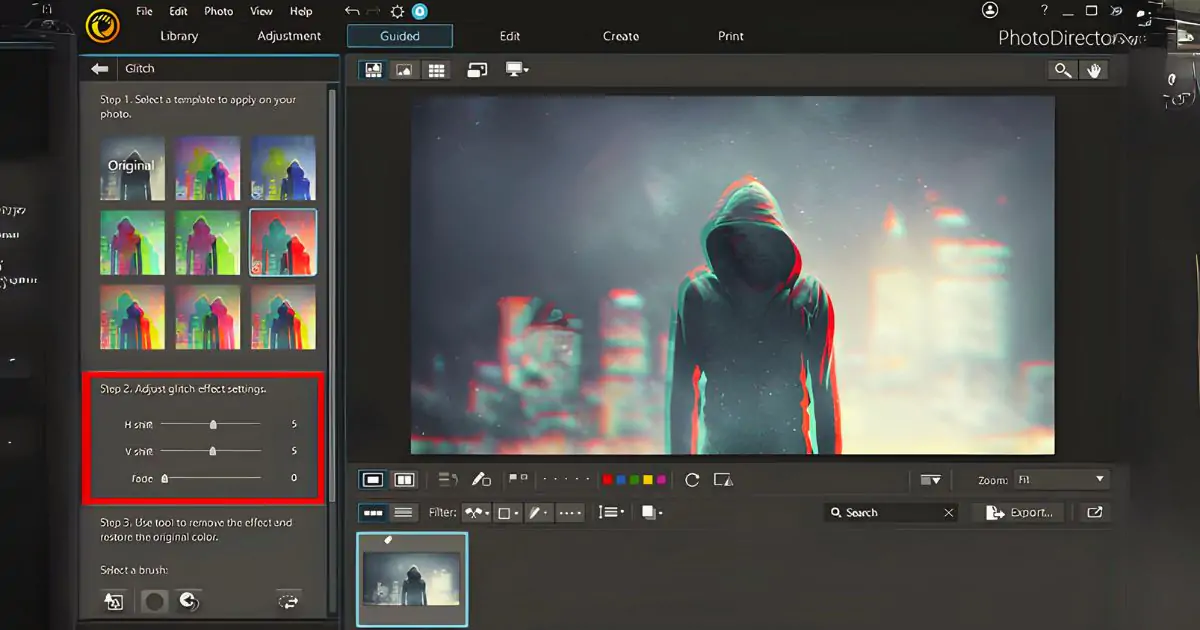Glitch Transitions, Elements FT. Broadcast & Digital
In the ever-evolving landscape of multimedia design and animation, glitch transitions and elements have emerged as a captivating trend, blurring the lines between the digital and the physical. These edgy, distorted visuals offer a unique and avant-garde approach to storytelling, capturing the attention of audiences with their raw, gritty aesthetic. From broadcast media to interactive digital experiences, glitch transitions and elements have become a powerful tool for creators seeking to push the boundaries of conventional design.
Read More: Paper Rip Transitions
The Rise of Glitch Aesthetics
Embracing Imperfection in a Digital Age
The glitch aesthetic has its roots in the early days of digital technology when hardware and software errors would manifest as visual glitches on screens and displays. What was once considered a flaw or malfunction has now been embraced as a distinctive artistic expression, reflecting the imperfections and complexities of our digital world.
A Rebellion Against Perfection
Glitch transitions and elements challenge the notion of pristine, polished visuals by intentionally introducing distortions, pixel disruptions, and digital artifacts. This deliberate departure from traditional design conventions represents a rebellion against the pursuit of perfection, inviting viewers to embrace the beauty in the unexpected and the unconventional.
Glitch Transitions: Disrupting the Conventional Flow
Capturing Attention with Disruptive Visuals
Glitch transitions are a powerful tool for capturing and retaining viewer attention in a world saturated with multimedia content. By intentionally distorting and disrupting the flow of visuals, these transitions create a jarring and unexpected experience that demands the viewer’s focus. Whether used in broadcast graphics, video content, or interactive experiences, glitch transitions offer a refreshing departure from traditional transitions, captivating audiences with their raw and unpredictable nature.
Enhancing Storytelling and Emphasizing Key Moments
Beyond their attention-grabbing qualities, glitch transitions can be strategically employed to enhance storytelling and emphasize key moments within a narrative. By introducing visual disruptions at critical points, creators can heighten the emotional impact or reinforce thematic elements, leaving a lasting impression on the viewer.
Glitch Elements: Embracing Digital Imperfections
Crafting Unique Visual Identities
Glitch elements, such as distorted graphics, pixelated textures, and digital noise, offer designers and artists a rich palette of visual components to create unique and distinctive visual identities. By incorporating these elements into their work, creators can infuse their projects with a sense of edginess and modernity, reflecting the complexities and imperfections inherent in our digital age.
Revealing the Beauty in Chaos
Glitch elements often evoke a sense of controlled chaos, where order and disorder coexist in a delicate balance. This juxtaposition of structure and randomness can be leveraged to convey deeper themes and metaphors, inviting viewers to explore the beauty that lies within the chaotic and the imperfect.
Applications Across Diverse Mediums
Broadcast Graphics and Motion Design
Glitch transitions and elements have found a natural home in the realm of broadcast graphics and motion design. From television show openers and channel branding to live event graphics and music videos, these visuals inject a raw and edgy energy that captivates audiences and leaves a lasting impact.
Interactive Experiences and Installations
Glitch transitions and elements offer a unique opportunity to create immersive and engaging environments in interactive experiences and installations. By incorporating these visuals into user interfaces, projection mapping, or interactive installations, designers can craft experiences that challenge traditional perceptions and invite participants to explore the intersection of the physical and the digital.
Advertising and Brand Identity
Brands seeking to convey a sense of authenticity, edginess, and modernity have embraced glitch aesthetics as a powerful tool for creating compelling advertising campaigns and distinctive brand identities. By incorporating glitch transitions and elements into their marketing materials, brands can establish a strong visual language that resonates with contemporary audiences.
Frequently Asked Questions (FAQs)
1. How can I create glitch transitions and elements?
While creating glitch visuals requires some technical skills, there are various software tools and resources available to assist in the process. Popular programs like Adobe After Effects, Adobe Photoshop, and Blender offer powerful tools and plugins for generating and animating glitch elements.
2. What are some tips for creating realistic and engaging glitch transitions?
To enhance the illusion of a digital glitch, pay close attention to details such as digital artifacts, pixel distortions, and color shifts. Experiment with different glitch techniques, such as data corruption, compression artifacts, or signal interference, to add variety and interest.
3. How can I incorporate glitch elements into my projects?
Start by creating individual glitch elements, such as distorted textures, pixelated shapes, or digital noise layers. Then, layer and animate these elements to create dynamic compositions that convey your desired aesthetic or narrative.
4. What are some common use cases for glitch transitions and elements?
These visuals can be effectively used in broadcast graphics, motion design, interactive installations, advertising campaigns, music videos, and even print or digital brand identities.
5. How do I ensure consistency when using glitch transitions and elements?
Establish a consistent visual style and color palette for your glitch elements. Maintain coherent distortion levels and digital artifacts throughout your animations to create a unified look and feel.
6. Can glitch transitions and elements be combined with other design elements or animation styles?
Absolutely! Glitch visuals can be seamlessly integrated with other design elements like typography, illustrations, or 3D models. They can also be combined with different animation styles, such as motion graphics or stop-motion, to create unique and compelling visuals.
7. How can I make my glitch transitions and elements more engaging?
Experiment with different levels of distortion and digital artifacts to add visual interest. Incorporate sound effects or glitchy audio elements to enhance the overall experience. Consider adding interactive elements or user-triggered glitch effects for added engagement.
8. Are there any best practices for optimizing glitch transitions and elements for different platforms?
Yes, it’s essential to consider the target platform and its technical specifications. For web-based animations, optimize file sizes and employ techniques like preloading or lazy loading to ensure smooth performance. For video content, consider rendering in appropriate resolutions and codecs.
9. How can I stay up-to-date with the latest trends and techniques in glitch transitions and elements?
Follow design blogs, forums, and online communities dedicated to motion graphics, interactive design, and glitch aesthetics. Attend industry events, workshops, or webinars to learn from experts and stay informed about emerging trends and best practices.
10. Are there any legal considerations when using glitch transitions and elements in commercial projects?
While the techniques themselves are not subject to copyright restrictions, it’s crucial to ensure that any third-party assets or resources used in your projects (e.g., textures, fonts, illustrations) are appropriately licensed or have the necessary permissions for commercial use.





